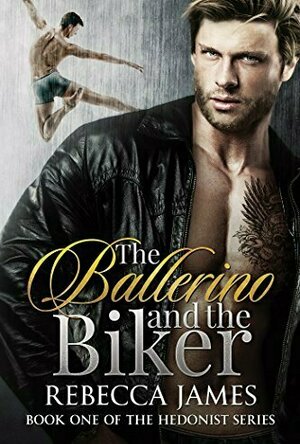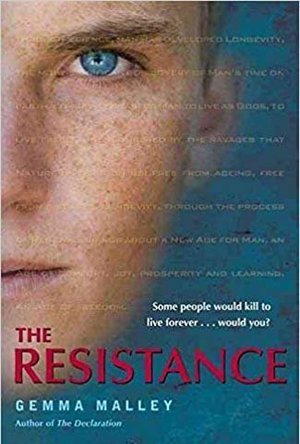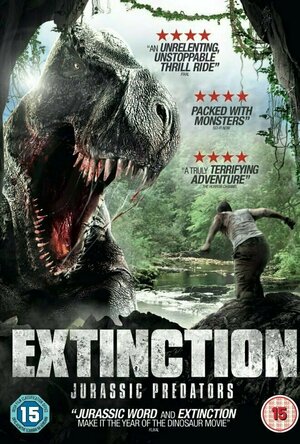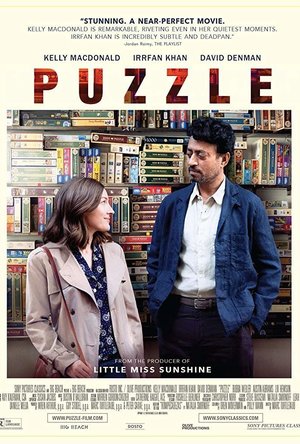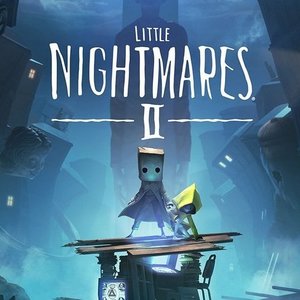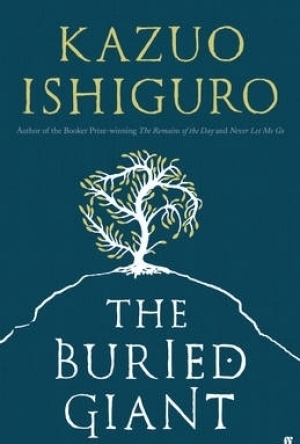Search
Search results
Leanne Crabtree (480 KP) rated The Ballerino and the Biker (The Hedonist, #1) in Books
Jan 11, 2021
This has been borrowed from the Kindle Unlimited Library.
In this one Morgan has just buried his older brother, Jake, who was part of an MC. He was the only family that Morgan had left in the world and now so he focuses on his ballet with the help of his best friend, Nikki. Only Morgan arrives home to someone in his apartment and he struggles against the man. It turns out the man, Zeke, is from Jake's MC and is there to protect him from a rival biker club after Jake died with a female from the other MC. Zeke is drawn to Morgan and vice versa so it's not long before sparks are flying, though Zeke is adamant he's straight.
This definitely felt like a gay-for-you story. Zeke wasn't attracted to any other guys really, though in the end he settled on himself being bisexual. He's the strong silent type and completely opposite to ballerino - Italian for male ballerina - Morgan. They do have an intense attraction for each other and it takes a while for anything to happen but once it does, it quickly turns into more than physical attraction. Opposites attract and all that.
I'm intrigued by some of the other MC members like Blaze and what's going to happen between Dante and Swish.
Speaking of the MC, we didn't really see much of that side of the story. Most of the time Zeke was working on cars in the garage or the guys were settling down to meals together. We know the MC run a business out back that films their own pornography but that's about it. And we had that short bit at the start involving the Hedonist's rivals wanting to hurt Morgan in retaliation for the death of one of theirs but that was it.
That end bit with Morgan's stalker was a bit strange, if you ask me. I wasn't expecting it to take that turn or be that person and it threw me a little but it all worked out in the end due to Morgan's quick thinking
As mentioned above I do think I'll look up this series in the future to see what happens with Dante and Swish and Blaze with his questions on gay sex etc.
In this one Morgan has just buried his older brother, Jake, who was part of an MC. He was the only family that Morgan had left in the world and now so he focuses on his ballet with the help of his best friend, Nikki. Only Morgan arrives home to someone in his apartment and he struggles against the man. It turns out the man, Zeke, is from Jake's MC and is there to protect him from a rival biker club after Jake died with a female from the other MC. Zeke is drawn to Morgan and vice versa so it's not long before sparks are flying, though Zeke is adamant he's straight.
This definitely felt like a gay-for-you story. Zeke wasn't attracted to any other guys really, though in the end he settled on himself being bisexual. He's the strong silent type and completely opposite to ballerino - Italian for male ballerina - Morgan. They do have an intense attraction for each other and it takes a while for anything to happen but once it does, it quickly turns into more than physical attraction. Opposites attract and all that.
I'm intrigued by some of the other MC members like Blaze and what's going to happen between Dante and Swish.
Speaking of the MC, we didn't really see much of that side of the story. Most of the time Zeke was working on cars in the garage or the guys were settling down to meals together. We know the MC run a business out back that films their own pornography but that's about it. And we had that short bit at the start involving the Hedonist's rivals wanting to hurt Morgan in retaliation for the death of one of theirs but that was it.
That end bit with Morgan's stalker was a bit strange, if you ask me. I wasn't expecting it to take that turn or be that person and it threw me a little but it all worked out in the end due to Morgan's quick thinking
As mentioned above I do think I'll look up this series in the future to see what happens with Dante and Swish and Blaze with his questions on gay sex etc.
Eleanor Luhar (47 KP) rated The Returners in Books
Jun 24, 2019
I have a vague recollection of reading this some time in the past which is kind of ironic considering the topic of the book itself. While I felt a repeated deja vu throughout this book, I can't seem to remember when I actually would have read it before. I also couldn't remember much of the main plot, which is pretty weird.
Anyway, the review.
It's a good book. honestly, the opening paragraph of this review sums the book up quite well - it's good, but not overly memorable. When you read it, you often think, "this is good" or "cool" or whatever, but a few months later you'll forget all about it. At least, that's how I felt.
Gemma Malley is an author I used to love when I was in my preteens, and I'm not sure if that's why her books feel very adolescent to me, or if it's because they actually are. Basically, I feel too old for them now. The protagonists are usually "cool" mid-teens, who the reader is supposed to look up to in some way. But I'm older than most characters and actually find their attitudes a bit pathetic and petty.
The story was good but I felt like there were a few loopholes, honestly. The idea of the "Returners" is interesting but not developed enough - who actually 'controls' them? Where did they come from? What is their real purpose? I felt like their purpose was a bit wishy-washy. Douglas's refusal to change his attitude because it "isn't their role" or whatever just sounded a bit... lame. Like a cop-out, I guess. I really would've liked to know more about the Returners and why they actually exist.
It's only short and this may contribute to it feeling quite young, but it is well written and really enjoyable to read. Will is almost an anti-hero, and as the reader I both loved and hated him. His thoughts and attitudes were quite sporadic and it was sometimes hard to keep up, but that may have been the intention. I did like how we learned things at the same time as Will - we followed him through his own story. It was also really interesting how Will decided to handle the life he'd been forced into.
4 stars.
Anyway, the review.
It's a good book. honestly, the opening paragraph of this review sums the book up quite well - it's good, but not overly memorable. When you read it, you often think, "this is good" or "cool" or whatever, but a few months later you'll forget all about it. At least, that's how I felt.
Gemma Malley is an author I used to love when I was in my preteens, and I'm not sure if that's why her books feel very adolescent to me, or if it's because they actually are. Basically, I feel too old for them now. The protagonists are usually "cool" mid-teens, who the reader is supposed to look up to in some way. But I'm older than most characters and actually find their attitudes a bit pathetic and petty.
The story was good but I felt like there were a few loopholes, honestly. The idea of the "Returners" is interesting but not developed enough - who actually 'controls' them? Where did they come from? What is their real purpose? I felt like their purpose was a bit wishy-washy. Douglas's refusal to change his attitude because it "isn't their role" or whatever just sounded a bit... lame. Like a cop-out, I guess. I really would've liked to know more about the Returners and why they actually exist.
It's only short and this may contribute to it feeling quite young, but it is well written and really enjoyable to read. Will is almost an anti-hero, and as the reader I both loved and hated him. His thoughts and attitudes were quite sporadic and it was sometimes hard to keep up, but that may have been the intention. I did like how we learned things at the same time as Will - we followed him through his own story. It was also really interesting how Will decided to handle the life he'd been forced into.
4 stars.
Emma @ The Movies (1786 KP) rated SuperFly (2018) in Movies
Sep 25, 2019
This is a remake of Super Fly from 1972, not one I've seen, after seeing this I don't think I'll bother.
I can't say that any of the acting really stood out over the rest. It's not really my genre/subject matter, but everything did feel rather stereotypical. It was an interesting story, but for me the negatives outweighed the positives.
The style of the first and only real fight scene of the whole film was very good, if a little cheesy. It hit the spot for action but it didn't feel like any of the rest of the movie and stuck out a little for me. Perhaps because it's one of the few times we see Priest express any violence? I'm not sure.
Superfly ticks one of my top film faux pas... tailing people so close that there's no way they're not going to see you. Especially in this instance where the job basically requires you to be excessively paranoid.
At about the half way point I honestly didn't really know what was going on. I was more confused by everything than engrossed.
I don't know the ins and outs of filming techniques, but it seemed like there were a lot of different things involved in this one. As well as the fight scene early on there's a short chase scene where the footage doesn't quite seem real, it's more like game play. Whatever it was (I know you're enjoying my super technical terminology here) it stuck out like a sore thumb.
My only other observation about Superfly is Priest's relationship. Not your usual main stream thing which made a nice change... but... it really felt like it was thrown in gratuitously. I'm not being prudish here, I honestly don't mind sex scenes in films, but this one wasn't needed for the story line. It was over the top and wholly unnecessary.
What should you do?
It's not one I'd go recommending to people, but if you like drug related movies then why not give it a go. If you're more intrigued by that sex scene then I'm sure there's plenty of porn you could watch online instead.
Movie thing you wish you could take home
I'll have that big pile of cash, please and thank you.
I can't say that any of the acting really stood out over the rest. It's not really my genre/subject matter, but everything did feel rather stereotypical. It was an interesting story, but for me the negatives outweighed the positives.
The style of the first and only real fight scene of the whole film was very good, if a little cheesy. It hit the spot for action but it didn't feel like any of the rest of the movie and stuck out a little for me. Perhaps because it's one of the few times we see Priest express any violence? I'm not sure.
Superfly ticks one of my top film faux pas... tailing people so close that there's no way they're not going to see you. Especially in this instance where the job basically requires you to be excessively paranoid.
At about the half way point I honestly didn't really know what was going on. I was more confused by everything than engrossed.
I don't know the ins and outs of filming techniques, but it seemed like there were a lot of different things involved in this one. As well as the fight scene early on there's a short chase scene where the footage doesn't quite seem real, it's more like game play. Whatever it was (I know you're enjoying my super technical terminology here) it stuck out like a sore thumb.
My only other observation about Superfly is Priest's relationship. Not your usual main stream thing which made a nice change... but... it really felt like it was thrown in gratuitously. I'm not being prudish here, I honestly don't mind sex scenes in films, but this one wasn't needed for the story line. It was over the top and wholly unnecessary.
What should you do?
It's not one I'd go recommending to people, but if you like drug related movies then why not give it a go. If you're more intrigued by that sex scene then I'm sure there's plenty of porn you could watch online instead.
Movie thing you wish you could take home
I'll have that big pile of cash, please and thank you.
Darren (1599 KP) rated Extinction: Jurassic Predators (2014) in Movies
Sep 13, 2019
Characters – Michelle is the presenter of the documentary and we barely see her do any presenting, we have a small moment early on but otherwise the camera spends a lot of time to following her ass on screen. Professor Howson is the expect in the field and meant to be the star alongside Michelle in the documentary, he must lead them to safety through the rainforest. Rob is the second in command being a lot more laid back when dealing with any danger believing in his own abilities. James is the cameraman that at one moment states the obvious, another moment does all the stupid things and somewhere along the lines becomes the bravest member of the crew.
Performance – The performances from the whole cast are fine, where the cast are not big-name actors which brings us into the found footage idea perfectly and nobody seems to overact through the film.
Story – Documentary crew heads into the rainforest to look for new species and they find some, but they are deadly, this is all we need from the film as a story, there are no major twists but it does take a while to get going as we must watch, walking, collecting moss, running and rocks for a lot of the time.
Adventure/Thriller – The adventure comes from the idea that we could be finding new species in the deepest darkest corners of the world and we are kept guess just who will make it out of the rainforest alive.
Settings – The rainforest is filled with species we might not have discovered yet, so this works for the settings needed for the film to take places.
Special Effects – The effects are a mixed bag, some parts of them are good while others feel like someone just stuck a dinosaur into the shot with CGI.
Scene of the Movie – Can’t sense us if we don’t move.
That Moment That Annoyed Me – Camera crew inside the tent ‘there is something out there, I can’t see anything’ this dialogue is why films get a bad name.
Final Thoughts – This does feel like a long-found footage film that could have been cut down by a good 20 minutes to fit the idea of a found footage concept that works, short sweat and plenty of fun.
Overall: Watchable found footage.
Performance – The performances from the whole cast are fine, where the cast are not big-name actors which brings us into the found footage idea perfectly and nobody seems to overact through the film.
Story – Documentary crew heads into the rainforest to look for new species and they find some, but they are deadly, this is all we need from the film as a story, there are no major twists but it does take a while to get going as we must watch, walking, collecting moss, running and rocks for a lot of the time.
Adventure/Thriller – The adventure comes from the idea that we could be finding new species in the deepest darkest corners of the world and we are kept guess just who will make it out of the rainforest alive.
Settings – The rainforest is filled with species we might not have discovered yet, so this works for the settings needed for the film to take places.
Special Effects – The effects are a mixed bag, some parts of them are good while others feel like someone just stuck a dinosaur into the shot with CGI.
Scene of the Movie – Can’t sense us if we don’t move.
That Moment That Annoyed Me – Camera crew inside the tent ‘there is something out there, I can’t see anything’ this dialogue is why films get a bad name.
Final Thoughts – This does feel like a long-found footage film that could have been cut down by a good 20 minutes to fit the idea of a found footage concept that works, short sweat and plenty of fun.
Overall: Watchable found footage.
Darren (1599 KP) rated Puzzle (2018) in Movies
Sep 13, 2019
Characters – Michelle is the presenter of the documentary and we barely see her do any presenting, we have a small moment early on but otherwise the camera spends a lot of time to following her ass on screen. Professor Howson is the expect in the field and meant to be the star alongside Michelle in the documentary, he must lead them to safety through the rainforest. Rob is the second in command being a lot more laid back when dealing with any danger believing in his own abilities. James is the cameraman that at one moment states the obvious, another moment does all the stupid things and somewhere along the lines becomes the bravest member of the crew.
Performance – The performances from the whole cast are fine, where the cast are not big-name actors which brings us into the found footage idea perfectly and nobody seems to overact through the film.
Story – Documentary crew heads into the rainforest to look for new species and they find some, but they are deadly, this is all we need from the film as a story, there are no major twists but it does take a while to get going as we must watch, walking, collecting moss, running and rocks for a lot of the time.
Adventure/Thriller – The adventure comes from the idea that we could be finding new species in the deepest darkest corners of the world and we are kept guess just who will make it out of the rainforest alive.
Settings – The rainforest is filled with species we might not have discovered yet, so this works for the settings needed for the film to take places.
Special Effects – The effects are a mixed bag, some parts of them are good while others feel like someone just stuck a dinosaur into the shot with CGI.
Scene of the Movie – Can’t sense us if we don’t move.
That Moment That Annoyed Me – Camera crew inside the tent ‘there is something out there, I can’t see anything’ this dialogue is why films get a bad name.
Final Thoughts – This does feel like a long-found footage film that could have been cut down by a good 20 minutes to fit the idea of a found footage concept that works, short sweat and plenty of fun.
Overall: Watchable found footage.
Performance – The performances from the whole cast are fine, where the cast are not big-name actors which brings us into the found footage idea perfectly and nobody seems to overact through the film.
Story – Documentary crew heads into the rainforest to look for new species and they find some, but they are deadly, this is all we need from the film as a story, there are no major twists but it does take a while to get going as we must watch, walking, collecting moss, running and rocks for a lot of the time.
Adventure/Thriller – The adventure comes from the idea that we could be finding new species in the deepest darkest corners of the world and we are kept guess just who will make it out of the rainforest alive.
Settings – The rainforest is filled with species we might not have discovered yet, so this works for the settings needed for the film to take places.
Special Effects – The effects are a mixed bag, some parts of them are good while others feel like someone just stuck a dinosaur into the shot with CGI.
Scene of the Movie – Can’t sense us if we don’t move.
That Moment That Annoyed Me – Camera crew inside the tent ‘there is something out there, I can’t see anything’ this dialogue is why films get a bad name.
Final Thoughts – This does feel like a long-found footage film that could have been cut down by a good 20 minutes to fit the idea of a found footage concept that works, short sweat and plenty of fun.
Overall: Watchable found footage.
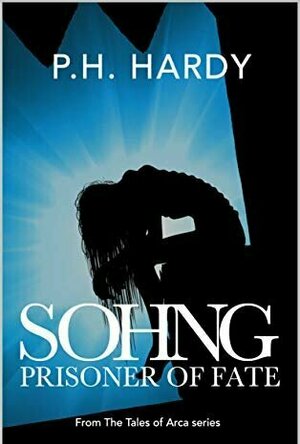
Sohng: Prisoner of Fate (Tales of Arca #1)
Book
n a world of hidden secrets, all will be revealed in this Dark, Science Fiction, Fantasy Adventure....
Ali A (82 KP) rated Hello (from Here) in Books
Sep 14, 2021
Trigger Warnings: Covid-19, death of a parent, AIDS, generalized anxiety disorder, panic attacks,
Max and Jonah bump into each over at the grocery store right when the Covid-19 lockdown was beginning in California. Max's part-time job as a personal shopper begins to transform into a bit of a nightmare and Jonah's pre-existing anxiety disorder is becoming a daily struggle. Can the two come together even though they must stay apart? Hello (from Here) jumps into the first two months of the quarantine and the love lives and two teenagers trying to figure out this new world.
This wasn't my favorite book on the planet, but I still enjoyed it nonetheless. I will also keep it on my shelves and possibly come back to it another time (when the Corona Virus isn't still running wild). Like most who have reviewed this book, I feel like it may have been too soon.
The main characters were okay, but not amazing, I did find them a little whiny towards the end... Olivia, Jonah's sister, was probably my favorite out of everybody and I'd kind of like to hear some more of her story! Also Arlo and his story! Kate and Jonah's "step-parent replacing late parent" trope was shown well in the novel. I thought the development of their relationship was well handled and realistic. I was happy with the end result for them.
I also thought the anxiety disorder representation was handled well in this novel too. As someone with anxiety who has had panic attacks (though not quite like Jonah's), I felt like one could still understand what he was going through, especially in his current situation.
I feel like this novel fell short - mostly by tackling too much all at once. I felt a little anticlimactic by the time I closed it. So many things were brought up: important issues and themes, but then were finished limply in the end. (view spoiler).
The cheating storyline was just - bleh. It wasn't needed and was more of a distraction. I also felt like it didn't make much sense for how the character had been acting throughout the whole storyline.
Overall, I feel like this was just too soon. I'm sure it will be good in a few years time though, when we weren't all still going through the same pandemic.
Max and Jonah bump into each over at the grocery store right when the Covid-19 lockdown was beginning in California. Max's part-time job as a personal shopper begins to transform into a bit of a nightmare and Jonah's pre-existing anxiety disorder is becoming a daily struggle. Can the two come together even though they must stay apart? Hello (from Here) jumps into the first two months of the quarantine and the love lives and two teenagers trying to figure out this new world.
This wasn't my favorite book on the planet, but I still enjoyed it nonetheless. I will also keep it on my shelves and possibly come back to it another time (when the Corona Virus isn't still running wild). Like most who have reviewed this book, I feel like it may have been too soon.
The main characters were okay, but not amazing, I did find them a little whiny towards the end... Olivia, Jonah's sister, was probably my favorite out of everybody and I'd kind of like to hear some more of her story! Also Arlo and his story! Kate and Jonah's "step-parent replacing late parent" trope was shown well in the novel. I thought the development of their relationship was well handled and realistic. I was happy with the end result for them.
I also thought the anxiety disorder representation was handled well in this novel too. As someone with anxiety who has had panic attacks (though not quite like Jonah's), I felt like one could still understand what he was going through, especially in his current situation.
I feel like this novel fell short - mostly by tackling too much all at once. I felt a little anticlimactic by the time I closed it. So many things were brought up: important issues and themes, but then were finished limply in the end. (view spoiler).
The cheating storyline was just - bleh. It wasn't needed and was more of a distraction. I also felt like it didn't make much sense for how the character had been acting throughout the whole storyline.
Overall, I feel like this was just too soon. I'm sure it will be good in a few years time though, when we weren't all still going through the same pandemic.
Chris Sawin (602 KP) rated the PlayStation 4 version of Little Nightmares II in Video Games
Apr 9, 2021
The incredible story. (3 more)
Great visuals and interactions with items both in the foreground and background.
Brilliant score.
Its gameplay and controls are mostly entertaining.
Some puzzles are difficult to solve without cheating. (2 more)
It is ridiculously difficult at times. Expect to die. A lot.
It is longer than the first game, but still feels short.
A Visually Creepy Masterpiece with a few Minor Flaws
Little Nightmares II is a vast improvement over the original game that still has a few flaws that could be ironed out in a sequel. The first game was creepy and a lot of fun, but it felt incredibly short. It was the type of game you bought, played through quickly, and traded in because it didn’t seem to have much replay value. Although I'm just now reading about the DLC for the game and the hidden ending to Little Nightmares II, but I digress.
Little Nightmares II has you playing as Mono, a young boy that wears a paper bag over his head; not unlike Ugly Bob from the Terrance & Phillip In Not Without My Anus on the first episode of the second season of South Park. The game is a lot like Limbo with more color. Mono is thrown into a world of bleak surroundings and even darker outcomes. Thankfully, you have Six from the previous game to assist you. However, Little Nightmares II is only one player which seems like a missed opportunity for this to be a two player game.
The format of each level is pretty similar other than the last one. You typically flee a major boss character that chases you while you search for the key to a locked door. Stealth is involved throughout the game. If you make too much noise, run too fast, or walk into the light from the shadows in view of a boss’s eyesight then you get eaten or killed. You use your surroundings to thwart the boss, which usually involves killing them yourself. The chase element is the same near the end of the game, but you're thrown into more surreal and dreamlike surroundings.
It does seem like you interact more with the background in comparison to the previous game. You can almost always run into the background on any level. It may result in you falling off a cliff, but that kind of exploration ability in a side-scroller is really cool. I played Little Nightmares II on a PS5 despite the game being for PS4. What’s cool is you can feel Mono’s heartbeat through the controller when situations are tense and seeing little dust particles float through the air as you explore is a nice addition.
The highlight of the game is the story. The world Little Nightmares and Little Nightmares II takes place in is so deliciously dreary with what feels like no hope for survival. You root for Mono and Six to stay together as friends, but that outcome seems less and less likely as the game progresses. You also gain powers as Mono later on; the most noteworthy one being able to use televisions as portals. All of the major bosses are fantastically terrifying, as well. You’re chased by a hunter with a shotgun, a teacher with a stretchy neck and an appetite, twitchy mannequins that only move in darkness, viewers obsessed with television, and The Thin Man who kidnaps Six.
The game can be frustrating at times. Not only is it difficult and will result in you dying over and over again, but certain puzzles are almost impossible to solve without looking up how to solve them first.
According to the internet, it seems as though this may be the end of the Little Nightmares franchise since the creators are moving on to something new and will focus less on sequels in the future. It’s unfortunate since Dave Mervik’s writing with the story of the game is so well done and the game as a whole is mostly very fun and entertaining to play while providing legitimate thrills and chills. Tobias Lilja’s musical score is a frightening delight. However, despite Little Nightmare II’s flaws, it’ll be impossible not to be invested in anything Tarsier Studios is involved with in the years to come.
Little Nightmares II has you playing as Mono, a young boy that wears a paper bag over his head; not unlike Ugly Bob from the Terrance & Phillip In Not Without My Anus on the first episode of the second season of South Park. The game is a lot like Limbo with more color. Mono is thrown into a world of bleak surroundings and even darker outcomes. Thankfully, you have Six from the previous game to assist you. However, Little Nightmares II is only one player which seems like a missed opportunity for this to be a two player game.
The format of each level is pretty similar other than the last one. You typically flee a major boss character that chases you while you search for the key to a locked door. Stealth is involved throughout the game. If you make too much noise, run too fast, or walk into the light from the shadows in view of a boss’s eyesight then you get eaten or killed. You use your surroundings to thwart the boss, which usually involves killing them yourself. The chase element is the same near the end of the game, but you're thrown into more surreal and dreamlike surroundings.
It does seem like you interact more with the background in comparison to the previous game. You can almost always run into the background on any level. It may result in you falling off a cliff, but that kind of exploration ability in a side-scroller is really cool. I played Little Nightmares II on a PS5 despite the game being for PS4. What’s cool is you can feel Mono’s heartbeat through the controller when situations are tense and seeing little dust particles float through the air as you explore is a nice addition.
The highlight of the game is the story. The world Little Nightmares and Little Nightmares II takes place in is so deliciously dreary with what feels like no hope for survival. You root for Mono and Six to stay together as friends, but that outcome seems less and less likely as the game progresses. You also gain powers as Mono later on; the most noteworthy one being able to use televisions as portals. All of the major bosses are fantastically terrifying, as well. You’re chased by a hunter with a shotgun, a teacher with a stretchy neck and an appetite, twitchy mannequins that only move in darkness, viewers obsessed with television, and The Thin Man who kidnaps Six.
The game can be frustrating at times. Not only is it difficult and will result in you dying over and over again, but certain puzzles are almost impossible to solve without looking up how to solve them first.
According to the internet, it seems as though this may be the end of the Little Nightmares franchise since the creators are moving on to something new and will focus less on sequels in the future. It’s unfortunate since Dave Mervik’s writing with the story of the game is so well done and the game as a whole is mostly very fun and entertaining to play while providing legitimate thrills and chills. Tobias Lilja’s musical score is a frightening delight. However, despite Little Nightmare II’s flaws, it’ll be impossible not to be invested in anything Tarsier Studios is involved with in the years to come.
EmersonRose (320 KP) rated The Buried Giant in Books
Nov 20, 2019
The winner of the 2017 Nobel Prize for Literature, Kazuo Ishiguro was born in 1954 in Nagasaki Japan, but he and his family moved in England in 1960. These two places and cultures have profoundly affected Ishiguro’s writing throughout his career. His first book, A Pale View of Hills, was published in 1982 and won the Winifred Holtby Memorial Prize, and he has since written seven novels and numerous short stories. His most recent book was The Buried Giant in 2015.
It is hard to pinpoint a genre to which Kazuo Ishiguro sticks to as he writes in fantasy, science-fiction, and historical. It can be said that all of his novels have the feeling of being set in the past even when the time period is not explicitly described, but the core theme that connects all of his writing together is memory. In each of his stories, Ishiguro examines how people use memory, how memory affects people, and who we are with or without memory.
Ishiguro explores many different ways in which memory affects people throughout his books ranging from memory loss to dream like memory distortion. In his books Never Let Me Go and The Remains of the Day the stories are told by narrators looking back at crucial moments in their lives. In letting us know that they are remembering their own pasts they admit that they are saying their perspective and their memory might be lacking. In this way letting the reader know that they are unreliable narrators. In The Remains of the Day the narrator, the butler Mr. Stevens decides to go on a journey to visit an old friend and along the way shows his unreliability in several ways. First in acknowledging how memory can change and fade over time.
“It occurs to me that elsewhere in attempting to gather such recollections, I may well have asserted that this memory derived from the minute immediately after Miss Kenton receiving news of her aunt’s death….But now, having thought further, I believed I may have been a little confused about this matter; that in fact, this fragment of memory derives from events that took place on an evening at least a few months after the death of Miss Kenton’s aunt” (212).
In this way, Steven’s is acknowledging human error which both shows his unreliability but gives a level of trust in the acknowledgment that he is doing his best to be truthful. This, however, is challenged because Steven’s informs us that he lies, at the very least through omission, to other characters. A clear case of this is when he allows himself to be considered a gentleman rather than a butler on several occasions throughout his journey. This becomes complex because he is allowing the reader in on the truth, but the very fact of admitting that he can lie further reveals his unreliability.
In Ishiguro’s most recent book, The Buried Giant, he looks at memory in a way that is similar to these previous stories but takes a new approach. His central two characters in this book, Axle, and Beatrice are an elderly couple setting out on a journey with almost no memory of who they are. Throughout the story, they remember or think they remember pieces of their pasts and in the process making them question who they really are. This uncertainty in themselves creates interesting questions of whether or not they want to remember their lives if they are happier not knowing, and if they can continue to live their lives the way they are with their new/old information?
“Yet are you so certain, good mistress, you wish to be free of this mist? Is it not better some things remain hidden from our minds?”
“It may be for some, father, but not for us. Axl and I wish to have again the happy moments we shared together. To be robbed of them is as if a thief came in the night and took what’s most precious from us.”
“Yet the mist covers all memories, the bad as well as the good. Isn’t that so, mistress?”
“We’ll have the bad ones come back too, even if they make us weep or shake with anger. For isn’t it the life we’ve shared?” (172).
In some of Ishiguro’s other work, he chooses to explore memory through the lens of a dreamlike state or surreal views, such as his short story A Village After Dark and the novel The Unconsoled. In these stories, the narrator enters into a new place and finds that they have slowly emerging memories connected to the places and people they meet. The Unconsoled creates a strange dynamic where the lead character Mr. Ryder has never been to this town before but finds himself confronted by childhood acquaintances as well as meeting a woman and child who treat him like husband and father and memories that support this begin to come back to him. In an interview Ishiguro did on the book in 1995, he summarizes the story as “an anxiety dream” as Mr. Ryder continually finds himself confronted with the expectation of him without being told anything in advance. At the beginning of the story, Mr. Ryder arrives at his hotel knowing that he will be playing at a concert in few days and is told he has a busy schedule up till then. At this point in the story, the anxiety dream state sets in Mr. Ryder continuously finds himself late to engagements, leaving people behind by accident and being dragged around town. As the story progresses, Mr. Ryder begins to have memories of a past associated with some of the people he has met, despite being introduced as completely new to the town. Some of these can be explained by the fact that as a reader we are dropped into a story after it has started but the memories of these instances only come back to Ryder after he has been told things have happened. This means that throughout the story it impossible to know whether or not the narrator has forgotten and is remembering or if the town is merely a dream limbo and nothing he is being told is real, to begin with.
Whether taking the more fantastical approach or the those that fall closer to realism, Ishiguro’s play with memory remains relatable to the readers. Each journey Ishiguro writes is designed to tackle something different about memory. The stories ask us questions about what memory and how much it affects who we are and our ability to live in our world. From whether or not we can know who we are without memory to how trustworthy our memories actually are. These questions, however fantastically asked, offer something to the reader that they can relate to. For memory is almost a fanatical force on its own that we all share and try to understand. It can play with us when we take it for granted and offer vulnerability and connection when shared with others. Ishiguro delves into these ideas in each of his works, ever exploring its uncertainty and power.
It is hard to pinpoint a genre to which Kazuo Ishiguro sticks to as he writes in fantasy, science-fiction, and historical. It can be said that all of his novels have the feeling of being set in the past even when the time period is not explicitly described, but the core theme that connects all of his writing together is memory. In each of his stories, Ishiguro examines how people use memory, how memory affects people, and who we are with or without memory.
Ishiguro explores many different ways in which memory affects people throughout his books ranging from memory loss to dream like memory distortion. In his books Never Let Me Go and The Remains of the Day the stories are told by narrators looking back at crucial moments in their lives. In letting us know that they are remembering their own pasts they admit that they are saying their perspective and their memory might be lacking. In this way letting the reader know that they are unreliable narrators. In The Remains of the Day the narrator, the butler Mr. Stevens decides to go on a journey to visit an old friend and along the way shows his unreliability in several ways. First in acknowledging how memory can change and fade over time.
“It occurs to me that elsewhere in attempting to gather such recollections, I may well have asserted that this memory derived from the minute immediately after Miss Kenton receiving news of her aunt’s death….But now, having thought further, I believed I may have been a little confused about this matter; that in fact, this fragment of memory derives from events that took place on an evening at least a few months after the death of Miss Kenton’s aunt” (212).
In this way, Steven’s is acknowledging human error which both shows his unreliability but gives a level of trust in the acknowledgment that he is doing his best to be truthful. This, however, is challenged because Steven’s informs us that he lies, at the very least through omission, to other characters. A clear case of this is when he allows himself to be considered a gentleman rather than a butler on several occasions throughout his journey. This becomes complex because he is allowing the reader in on the truth, but the very fact of admitting that he can lie further reveals his unreliability.
In Ishiguro’s most recent book, The Buried Giant, he looks at memory in a way that is similar to these previous stories but takes a new approach. His central two characters in this book, Axle, and Beatrice are an elderly couple setting out on a journey with almost no memory of who they are. Throughout the story, they remember or think they remember pieces of their pasts and in the process making them question who they really are. This uncertainty in themselves creates interesting questions of whether or not they want to remember their lives if they are happier not knowing, and if they can continue to live their lives the way they are with their new/old information?
“Yet are you so certain, good mistress, you wish to be free of this mist? Is it not better some things remain hidden from our minds?”
“It may be for some, father, but not for us. Axl and I wish to have again the happy moments we shared together. To be robbed of them is as if a thief came in the night and took what’s most precious from us.”
“Yet the mist covers all memories, the bad as well as the good. Isn’t that so, mistress?”
“We’ll have the bad ones come back too, even if they make us weep or shake with anger. For isn’t it the life we’ve shared?” (172).
In some of Ishiguro’s other work, he chooses to explore memory through the lens of a dreamlike state or surreal views, such as his short story A Village After Dark and the novel The Unconsoled. In these stories, the narrator enters into a new place and finds that they have slowly emerging memories connected to the places and people they meet. The Unconsoled creates a strange dynamic where the lead character Mr. Ryder has never been to this town before but finds himself confronted by childhood acquaintances as well as meeting a woman and child who treat him like husband and father and memories that support this begin to come back to him. In an interview Ishiguro did on the book in 1995, he summarizes the story as “an anxiety dream” as Mr. Ryder continually finds himself confronted with the expectation of him without being told anything in advance. At the beginning of the story, Mr. Ryder arrives at his hotel knowing that he will be playing at a concert in few days and is told he has a busy schedule up till then. At this point in the story, the anxiety dream state sets in Mr. Ryder continuously finds himself late to engagements, leaving people behind by accident and being dragged around town. As the story progresses, Mr. Ryder begins to have memories of a past associated with some of the people he has met, despite being introduced as completely new to the town. Some of these can be explained by the fact that as a reader we are dropped into a story after it has started but the memories of these instances only come back to Ryder after he has been told things have happened. This means that throughout the story it impossible to know whether or not the narrator has forgotten and is remembering or if the town is merely a dream limbo and nothing he is being told is real, to begin with.
Whether taking the more fantastical approach or the those that fall closer to realism, Ishiguro’s play with memory remains relatable to the readers. Each journey Ishiguro writes is designed to tackle something different about memory. The stories ask us questions about what memory and how much it affects who we are and our ability to live in our world. From whether or not we can know who we are without memory to how trustworthy our memories actually are. These questions, however fantastically asked, offer something to the reader that they can relate to. For memory is almost a fanatical force on its own that we all share and try to understand. It can play with us when we take it for granted and offer vulnerability and connection when shared with others. Ishiguro delves into these ideas in each of his works, ever exploring its uncertainty and power.
